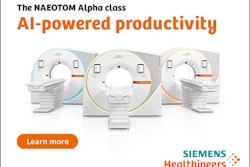Dear CT Insider,
A spate of celebrity deaths and diagnoses is underscoring the issue of lung cancer screening in the U.S. Large-scale screening efforts such as the National Lung Screening Trial, combined with an ever-growing influx of patients seeking scans on their own, mean that CT is being called on to screen more current and former smokers for the deadly disease.
But as the patient numbers grow, thoracic imaging experts are finding they have many more nodules to follow, and more tough management calls to make. At the same time, thinner collimation and an increasing number of CT detector rows are yielding more nodules per patient -- including more than half of the participants in one recent trial. Deciding what to do with all the detections is no easy job. When should solitary pulmonary nodules be ignored, watched, or followed up?
In today's CT Insider Exclusive, made available to our Insider subscribers before our other AuntMinnie members can read it, two noted thoracic radiologists weigh in on the issue. Dr. Ella Kazerooni from the University of Michigan and Dr. Ann Leung from Stanford University in California discuss the evidence, the terabytes of patient screening data, and current thinking with regard to the management of solitary pulmonary nodules (SPNs).
In our CT Digital Community, Dr. Andrew Quon, also from Stanford, discusses when PET can help resolve tough patient-management questions, and when it can't.
Also in this issue, don't miss the final installment of our series on building an angiography practice, wherein Dr. David Dowe shows you how to perform CTA successfully in the community setting. New codes for CTPA will help pave the way to reimbursement. Or will they?
Meanwhile, CT has become the method of choice for ruling out pulmonary embolism, even in pregnant patients. But some folks Down Under, who may be more adept than Americans at performing ventilation perfusion scintigraphy, think CT in such cases may prove to be ill-advised.
Finally, you'll want to read about how doctors in Baltimore are using CT in the emergency room to evaluate chest pain. After all, not all chest pain is related to coronary calcium. Scroll down for the rest of the CT news that's fit to print -- all in your CT Digital Community.




















